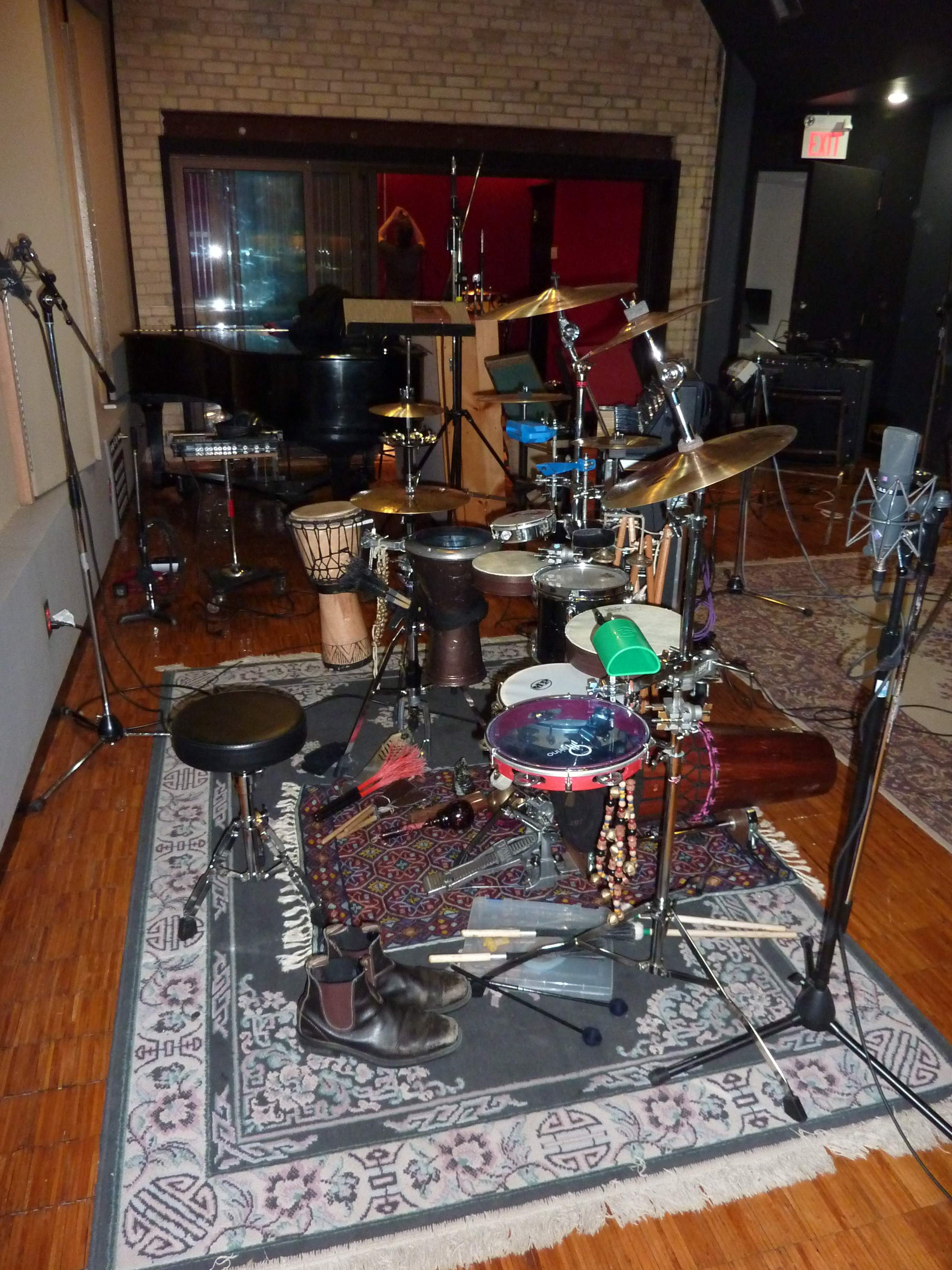| Diversified Percussive Contraption
In my personal quest to evolve as a drummer, I looked to the entire world of banging potential. In addition to my 3 drum kits, I have a collection of hand drums picked up from my travels as well as the local drum shops. It was from these individual pieces that my fourth drum kit, the diversified percussive contraption (the DPC) evolved. It was originally created from unused cymbal stands and clamps. Upon these, a variety of hand drums have been affixed such as a Brazilian Pandiero, Turkish Doumbek, African Djembe, Frame drums and an assortment of Latin blocks and cowbells. The “kick drum” is a 10” African Ashiko laid on its side with a foot pedal attached. I also have a complete cymbal pack of hihats, splashes and crashes.
 The DPC pays homage to the original traps that form the basic evolution of the drum kit. The complete history can be read on Wikipedia describing the evolution from the percussion section of an orchestra or big band to the individual drummer.
The DPC pays homage to the original traps that form the basic evolution of the drum kit. The complete history can be read on Wikipedia describing the evolution from the percussion section of an orchestra or big band to the individual drummer.
Essentially the traps came about with the development of the snare drum stand and the bass drum pedal which allowed a single percussionist to produce complex rhythms of Bass drum, snare and cymbal. The original drummers Gene Kruppa, Louis Bellson and Buddy Rich took the new craft to very high levels. The drum set has grown in size over the years with many multiples of toms and cymbals but the standard kit has not really evolved since the 50’s and to this day the 5 piece drum set essentially remains the same. Is the format stuck?
My one rule is that I try not to set up the “traps” the same way every time. I must pay attention to where the drums are. This keeps me firmly in the present and I cannot memorize any drum fills since they’re usually not in the same place. If I’m not carefull, I’ll have bruises on my knuckles to show for my inattention.
Also, I must play with brushes or blastix as these drums are too delicate for regular sticks. I do not have the benefit of bounce or drum rolls. Every hit is a manual labour of love. The limitations aren’t designed to be restrictive. The saying that “necessity is the mother of invention” comes to mind and often any limitation is a springboard to a new percussive approach. |
| Vocables
Singing vocables is very liberating. It allows the singer to concentrate on the emotion in that moment. What you proclaim is not as important as making that proclamation. I consider it the active ingredient when evaluating a soulful vocal performance. Our mutterings are not intended to make sense but to reach out and playfully engage your subconscious. Like a Rorschach test, the ink blots are the same but it’s the viewer that makes the interpretation. So you the listener are free to interpret the vocables in any way you choose. Maybe you've been comtemplating a change in your life, a new job, moving to a new land etc, listenting to vocables, especially when generated spontaneously may spark a 'yes' or 'no in making a choice. You have an active roll to play in this co-creative event whether you are hearing us live or on this recording for the first time. Wikipedia
|